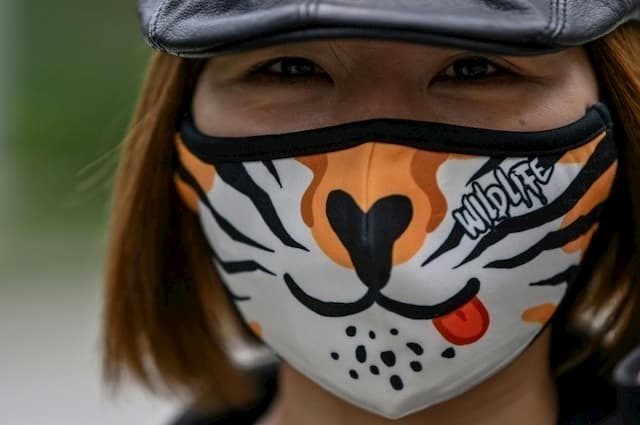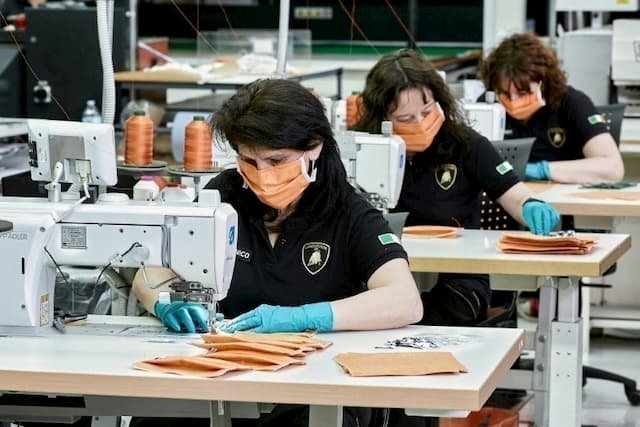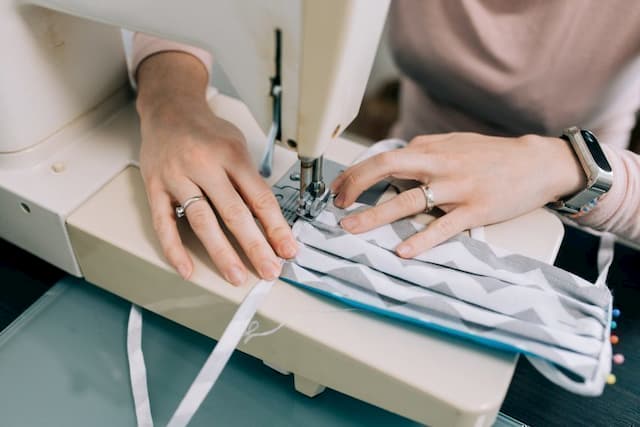Surgical masks and FFP2 must be reserved for nursing staff, but the French are now invited to protect themselves with alternative masks on a daily basis.
Soon all masked? After hammering that masks are useless against coronavirus when you’re not sick, the official discourse has changed in several countries this week, including France.
After the recommendation of the National Academy of Medicine that “the wearing of” alternative “general public masks is compulsory for all during and after confinement”, the director-general of health Jérôme Salomon confirmed Friday 3rd April 2020 the usefulness of the mask for the population.
A new position, while the government has previously indicated that wearing a mask is useless if you are not sick.
🔺#Covid19 #Masques L’Académie de médecine recommande que le port de #MASQUES #GrandPublic “alternatif” soit #OBLIGATOIRE #POURTOUS pendant et à la sortie du #confinement
[COMMUNIQUE]➡️ https://t.co/xkUe08wCHu pic.twitter.com/IA1dEgCEJS— Académie Nationale de Médecine (@acadmed) April 3, 2020
Read also: Covid-19: France crosses the bar of 6000 deaths in hospitals and in nursing homes
Surgical masks and FFP2 for professionals
In a press release dated April 2, 2020 , the National Academy of Medicine recalls that “the priority for the allocation of FFP2 masks and surgical masks acquired by the State must go to health structures (health establishments, medico-social establishments, health professionals in the liberal sector) and the most exposed professionals ”.
All the more in a situation of shortage of masks, observed in many places of the territory, even leading to thefts and scams on the part of unscrupulous individuals.
Read also: Coronavirus in Paris: first sentence to prison for illegal sale of masks
Alternative masks in production
The Academy of Medicine believes, however, that the wearing of a “general public” mask, also known as an “alternative”, must be made compulsory for the outings required during confinement.
This position is now supported by the French government, by announcing the manufacture of “alternative” masks, other than medical.
“We encourage the general public, if they wish, to wear (…) these alternative masks that are being produced,” said number 2 of the Ministry of Health, Professor Jérôme Salomon, on Friday.
“We still had this approach of wearing masks for the sick. France has chosen to produce masks for caregivers on its national territory, certainly masks for the sick but also so-called alternative masks.”
This production is “in the process of massive increase”, he specified, before adding that these masks made it possible “to protect oneself from the postillons when one is face to face”:
“If we have access to masks, we encourage the general public, if they wish, to wear masks, in particular these alternative masks which are being produced.”
🔴DIRECT | #Coronavirus #Covid19
➡ Suivez le point de situation du 3 avril 2020
🎙 Par le Pr Jérôme Salomon, Directeur général de la Santéhttps://t.co/VqWrcnZj1x— Ministère des Solidarités et de la Santé (@MinSoliSante) April 3, 2020
Also, tutorials to make them
On Wednesday, the popular television host Marina Carrère d’Encausse, also a doctor, had assured that official comments on the supposed uselessness of masks could amount to a “lie” made “for a good cause”, that is to say, that is, to reserve them for caregivers.
The Academy of Medicine also recommends that tutorials be widely disseminated to allow those who wish to easily make their own handcrafted mask, fabric (to be washed regularly) or other material.
The French collective Stop postillons offers them on its site ( stop-postillons.fr ). Launched by doctors, it speaks of “anti-postilion screens” for the general public rather than masks, in order to avoid confusion with the equipment for caregivers.
Bonjour à tous ! En France, nous n’avons pas de masques, mais nous avons des idées : les ÉCRANS ANTI-POSTILLONS 😷 #EAP https://t.co/4oxAUWXtxI
— Stop Postillons (@SPostillons) March 26, 2020
They do not replace barrier measures
The Director-General of Health reminded, however, that wearing a mask does not replace the barrier measures, which are always justified:
- Wash very regularly with soap or hydroalcoholic gel
- Avoid touching your face
- Cough or sneeze into your elbow or into a tissue, for single-use
- Greet each other without shaking hands and avoid kissing
- Respect social distancing
#Coronavirus #COVID19 | Recommandations
Respectez les consignes, même avec vos proches :
✅ Limitez les contacts
✅ Respectez les distances socialesLa meilleure protection face au virus : les #gestesbarrières pic.twitter.com/xD1P6VpHCF
— Ministère des Solidarités et de la Santé (@MinSoliSante) April 4, 2020
Other countries with the same logic
The most dramatic flip-flop about wearing the mask came from the United States on Friday: President Donald Trump announced that health officials are now advising Americans to cover their faces when they leave their homes.
“There is a real inflection in the United States and the WHO is in the process of revising its recommendations”, declared to AFP Professor KK Cheng, a public health specialist at the University of Birmingham (England), favourable to the general wearing of the mask.
Since the start of the epidemic, the WHO (World Health Organization) and many governments have reiterated that the masks should only be used by carers, the sick and those close to them, saying that they are based on scientific data.
But for the promoters of the generalized wearing of the mask, this discourse was above all intended to prevent the general public from rushing on those reserved for caregivers (surgical masks and FFP2, more protective) and aggravates an already existing shortage.
In fact, seen from Asia, where the use of masks is culturally valued, Western reluctance surprises them.

“A scarf, something you made, a bandana”
Previously, New York had already taken the plunge: Mayor Bill de Blasio asked residents on Thursday to cover their faces when they go out.
“It could be a scarf, something you made, a bandana,” he said.
Because to avoid the rush on medical masks, it is the masks homemade or manufactured by the textile industry which is put forward all over the world.
The scientists who promote them stress that they serve to avoid infecting others more than to protect oneself.
“Many people think that wearing a mask protects them from contamination, while it actually reduces the sources of transmission,” said Professor Cheng.
“It works if everyone is wearing it, and in this case, a very basic mask is enough because a piece of cloth can block the contaminated projections” emitted by a patient, he adds. “It’s not perfect, but it’s much better than nothing.”





